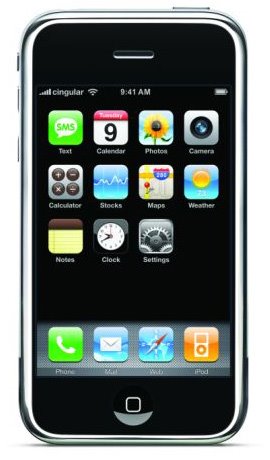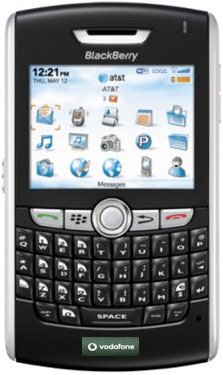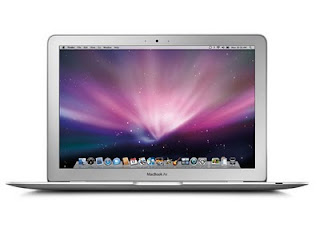The good: Apple's MacBook Air is thin and powerful enough to use as a mainstream laptop. It has an excellent battery and includes an SD card slot.
The bad: The Air has limited connections compared with other 13-inch laptops, and its keyboard isn't backlit. It's outclassed by the new MacBook Pro line.
The bottom line: The second generation of Apple's MacBook Air fixes many of our issues with the ambitious original, adding more USB ports, an SD card slot, and a more powerful processor.
Apple's original ultrathin MacBook Air was the very definition of a specialty laptop: its alluring design was offset by a limited number of connections and an underpowered CPU, making it truly useful for only a small fraction of users. The second generation of the 13-inch MacBook Air addresses most of our issues with the Air, adding a second USB port, an SD card slot, a higher-resolution display, and better CPUs.
To maximize battery life, this new MacBook Air moves to an SSD-only hard drive, and like the 11-inch version we reviewed last year, the system starts up in a flash and wakes up from its sleep state even faster.
All these improvements don't come cheap, however. At $1,299 (and up), this is a premium-priced laptop, and it feels even more so when you consider that the 11-inch Air and standard white MacBook are available for $999 (to say nothing of the $499 iPad).
If you can survive without a built-in optical drive, and don't need more than the two USB ports provided, we'd be tempted to say we'd grab this 13-inch MacBook Air over the more powerful 13-inch MacBook Pro, because its slim, lightweight design makes it a lot easier to carry around, but keep in mind that the newly refreshed 13-inch MacBook Pro (with Intel's latest Core i-series CPUs) both is much more powerful and has better battery life.
This second-generation MacBook Air looks and feels a lot like the original at first glance. Both the 11-inch and 13-inch versions of the Air have the same thickness, ranging from 0.11 inch to 0.68 inch, but spread over the larger footprint of the 13-inch chassis, this model seems especially thin.
At the same time, the rigid aluminum construction makes the Air feel sturdy enough to just throw in a bag and carry along with you. The trade-off there is that the 13-inch Air feels a bit heavier than its thin body would lead you to expect, especially compared with its 11-inch cousin or an iPad.
The large island-style keyboard and trackpad (which is the same glass version found on other MacBooks) both work very well, although the function keys at the very top are small. The F5 key is the only function key missing an alternate function; on other MacBooks (including the original MacBook Air), it's for the keyboard backlight. It's a shame it's missing here, as we've become used to it in Apple laptops, and it's genuinely useful for couch-based computing at night.
Despite the move by other laptop makers to larger clickpad-style touch pads, we have yet to find a touch pad that comes close to the MacBook's, especially as Apple provides for useful three- and four-finger gestures. The pad is hinged at the top, allowing the entire pad to click down, but we prefer traditional tapping (which is off by default and must be activated in the Preferences menu).
While the original MacBook Air has a then-standard 1,280x800-pixel screen resolution, this new version bumps that up to 1,440x900 pixels, although, unlike the 11-inch MacBook Air, this is not a 16:9 display. The screen area lacks the edge-to-edge glass over a black bezel found in other MacBooks; instead the screen is surrounded by a thick silver bezel, which is one of the only aesthetic issues we had with the system. Interestingly, the newer 13-inch MacBook Pro keeps the lower 1,280x800 resolution, making this the highest-res 13-inch laptop Apple makes.
Doubling the USB ports over the original Air from one to two is a welcome gesture, as is adding an SD card slot (but the smaller 11-inch version lacks that). Those additions take the MacBook Air from being a narrow-audience speciality system to a laptop that's useful enough for almost anyone.
That said, there are still some missing features that will rule the MacBook Air out for you if you absolutely need them; dedicated VGA or HDMI outputs are no-shows (you'll need an aftermarket adapter for the Mini-DisplayPort jack), as is onboard Ethernet (available via a $29 USB adaptor) or a built-in 3G wireless antenna. An external optical drive is available for an extra $79, but there's no Blu-ray option for MacBooks.
The base configuration of the 13-inch MacBook Air includes a 1.86GHz Intel Core 2 Duo CPU (not the current Core i-series), 2GB of RAM, and a 128GB solid-state drive. You can add another 2GB of RAM for $100, or trade up to a package that includes a faster 2.13GHz processor, 4GB of RAM, and a 256GB SSD for $1,799.
The Core 2 Duo/Nvidia 320M combo is similar to what you'd find in the current $999 white MacBook (although this is a ULV version of the Core 2 Duo in this case). Though it's not as fast as a non-ULV laptop, the MacBook Air is zippy enough for everyday use, and feels much closer to mainstream performance than the original Air.
To maximize battery life, this new MacBook Air moves to an SSD-only hard drive, and like the 11-inch version we reviewed last year, the system starts up in a flash and wakes up from its sleep state even faster.
All these improvements don't come cheap, however. At $1,299 (and up), this is a premium-priced laptop, and it feels even more so when you consider that the 11-inch Air and standard white MacBook are available for $999 (to say nothing of the $499 iPad).
If you can survive without a built-in optical drive, and don't need more than the two USB ports provided, we'd be tempted to say we'd grab this 13-inch MacBook Air over the more powerful 13-inch MacBook Pro, because its slim, lightweight design makes it a lot easier to carry around, but keep in mind that the newly refreshed 13-inch MacBook Pro (with Intel's latest Core i-series CPUs) both is much more powerful and has better battery life.
| Price as reviewed | $1,299 |
| Processor | 1.8GHz Intel Core 2 Duo |
| Memory | 2GB, 1,066MHz DDR3 |
| Hard drive | 128GB SSD |
| Chipset | MCP89 |
| Graphics | Nvidia GeForce 320M |
| Operating system | OS X 10.6.6 Snow Leopard |
| Dimensions (WD) | 12.8x8.9 inches |
| Height | 0.11-0.68 inches |
| Screen size (diagonal) | 13.3 inches |
| System weight / Weight with AC adapter | 2.3/2.7 pounds |
| Category | thin and light |
At the same time, the rigid aluminum construction makes the Air feel sturdy enough to just throw in a bag and carry along with you. The trade-off there is that the 13-inch Air feels a bit heavier than its thin body would lead you to expect, especially compared with its 11-inch cousin or an iPad.
The large island-style keyboard and trackpad (which is the same glass version found on other MacBooks) both work very well, although the function keys at the very top are small. The F5 key is the only function key missing an alternate function; on other MacBooks (including the original MacBook Air), it's for the keyboard backlight. It's a shame it's missing here, as we've become used to it in Apple laptops, and it's genuinely useful for couch-based computing at night.
Despite the move by other laptop makers to larger clickpad-style touch pads, we have yet to find a touch pad that comes close to the MacBook's, especially as Apple provides for useful three- and four-finger gestures. The pad is hinged at the top, allowing the entire pad to click down, but we prefer traditional tapping (which is off by default and must be activated in the Preferences menu).
While the original MacBook Air has a then-standard 1,280x800-pixel screen resolution, this new version bumps that up to 1,440x900 pixels, although, unlike the 11-inch MacBook Air, this is not a 16:9 display. The screen area lacks the edge-to-edge glass over a black bezel found in other MacBooks; instead the screen is surrounded by a thick silver bezel, which is one of the only aesthetic issues we had with the system. Interestingly, the newer 13-inch MacBook Pro keeps the lower 1,280x800 resolution, making this the highest-res 13-inch laptop Apple makes.
| Apple MacBook Air | Average for category [thin and light] | |
|---|---|---|
| Video | Mini-DisplayPort | VGA plus HDMI or DisplayPort |
| Audio | Stereo speakers, headphone jack | Stereo speakers, headphone/microphone jacks |
| Data | 2 USB 2.0, SD card reader | 3 USB 2.0, SD card reader |
| Expansion | None | None |
| Networking | Ethernet (via USB dongle), 802.11n Wi-Fi, Bluetooth | Ethernet, 802.11n Wi-Fi, Bluetooth, optional mobile broadband |
| Optical drive | None | DVD burner |
That said, there are still some missing features that will rule the MacBook Air out for you if you absolutely need them; dedicated VGA or HDMI outputs are no-shows (you'll need an aftermarket adapter for the Mini-DisplayPort jack), as is onboard Ethernet (available via a $29 USB adaptor) or a built-in 3G wireless antenna. An external optical drive is available for an extra $79, but there's no Blu-ray option for MacBooks.
The base configuration of the 13-inch MacBook Air includes a 1.86GHz Intel Core 2 Duo CPU (not the current Core i-series), 2GB of RAM, and a 128GB solid-state drive. You can add another 2GB of RAM for $100, or trade up to a package that includes a faster 2.13GHz processor, 4GB of RAM, and a 256GB SSD for $1,799.
The Core 2 Duo/Nvidia 320M combo is similar to what you'd find in the current $999 white MacBook (although this is a ULV version of the Core 2 Duo in this case). Though it's not as fast as a non-ULV laptop, the MacBook Air is zippy enough for everyday use, and feels much closer to mainstream performance than the original Air.




0 comments:
Post a Comment